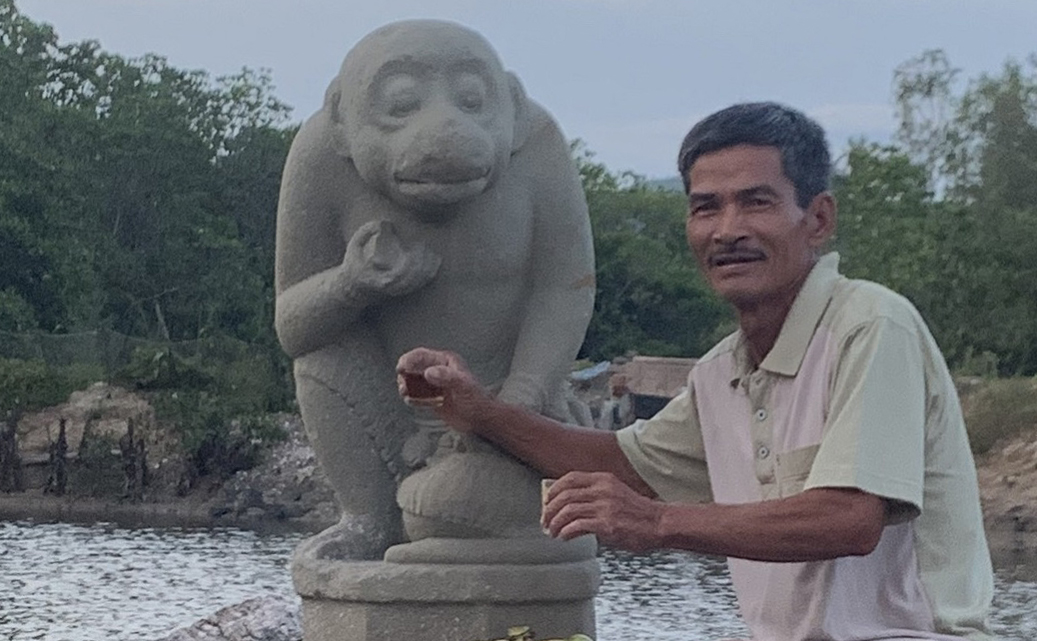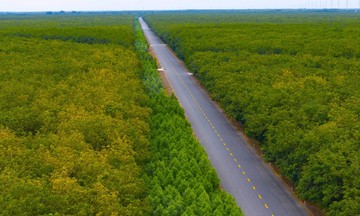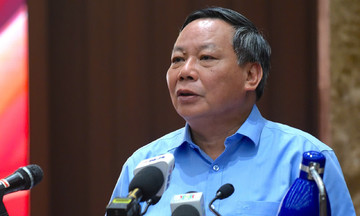On 21/8/2025, the People's Committee of Quang Ngai province officially declared the Hanuman statue as public property. The Quang Ngai Museum is now responsible for its preservation and exhibition. The Department of Culture, Sports, and Tourism will guide and coordinate with related units, and reward Mr. Luc, a resident of Tuyet Diem 3 village, formerly Binh Thuan commune, Binh Son district, now Van Tuong commune.
 |
Mr. Luc placed the statue on a rock in his fish pond, believing it to be sacred. Photo courtesy of Mr. Luc |
Mr. Luc placed the statue on a rock in his fish pond, believing it to be sacred. Photo courtesy of Mr. Luc
Experts date the statue to the 11th-12th centuries. It reflects the history of the region, showcases sophisticated sculpting techniques, and reveals Hindu influences. This unique artifact requires preservation and public display.
Mr. Luc recounted that in early 2021, while fishing in Vung Buon (Dung Quat sea), he noticed broken pottery fragments. Intrigued, he dived 3-4 meters deep, about 50 meters from the shore, and discovered a stone statue protruding from the sand.
In 3/2021, with the help of his family, he salvaged the statue and hired a crane to transport it home. Weighing approximately 150 kg, the statue proved difficult to move.
Initially, the statue remained unnoticed in his house. Later, curious onlookers offered up to 2 billion VND for it. However, Mr. Luc refused to sell, believing the statue held spiritual significance. In 2023, after local authorities learned about the discovery, he agreed to hand over the artifact to the state for preservation.
"I handed it over, hoping it would be preserved and displayed for everyone to see," Mr. Luc said.
The Quang Ngai Museum then assembled an appraisal council. Their findings confirmed the statue depicts the monkey god Hanuman. It is made of fine-grained sandstone, stands 84 cm tall, 40 cm wide, and weighs 150 kg. The statue consists of an octagonal stone base, 14 cm high, and the main body, 70 cm high, in a seated posture.
Details like the round head, protruding eyes, high nose bridge, wide mouth, circular patterns, and tassels around the belly reflect late Champa sculptural style with Khmer artistic influences.
 |
Upon bringing the statue home, Mr. Luc kept it inside and venerated it. Photo courtesy of Mr. Luc |
Upon bringing the statue home, Mr. Luc kept it inside and venerated it. Photo courtesy of Mr. Luc
The Hanuman statue in Quang Ngai is considered large and intact, holding significant comparative value. Researchers suggest it might originate from the Chanh Lo tower ruins, where hundreds of Champa sculptures were excavated in 1927.
Hanuman, the monkey god in Hinduism and a central figure in the epic Ramayana, symbolizes strength, loyalty, and wisdom. The Champa people widely worshipped Hanuman, evident in numerous relics and temples across central Vietnam.
Quang Ngai province boasts numerous Champa relics. Excavations in Chanh Lo, Binh Son, and Mo Duc have unearthed stone statues, bas-reliefs, and Champa bricks, demonstrating the presence of this culture in the region.
Pham Linh












